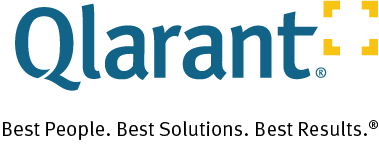EHR Adoption from a Social Cognitive Perspective
 Here at Qlarant, one of the online technology platforms that we are known for in the Medicare world is PLATO®, an analytics online solution to combat healthcare fraud, waste, and abuse (FWA). Four years into the initial launch, we have refined algorithms that focus on various FWA schemes, along with a series of visualization tools to help our users in their investigative and research efforts. Since the very beginning, the PLATO team has strived to increase the value of the tool by adding more algorithms with risk factors that our subject matter experts have accumulated, as well as including application features that will help our users better utilize the results from those algorithms and other data points. While providing users with value through the technology itself, the PLATO project has a stellar communication and support team who provides users with training, technical assistance, and other educational activities on a regular basis.
Here at Qlarant, one of the online technology platforms that we are known for in the Medicare world is PLATO®, an analytics online solution to combat healthcare fraud, waste, and abuse (FWA). Four years into the initial launch, we have refined algorithms that focus on various FWA schemes, along with a series of visualization tools to help our users in their investigative and research efforts. Since the very beginning, the PLATO team has strived to increase the value of the tool by adding more algorithms with risk factors that our subject matter experts have accumulated, as well as including application features that will help our users better utilize the results from those algorithms and other data points. While providing users with value through the technology itself, the PLATO project has a stellar communication and support team who provides users with training, technical assistance, and other educational activities on a regular basis.
Technology adoption is a classic research stream in the field of Information Technology. Qlarant’s effort in the development of PLATO is consistent with some literature on information technology adoption using the social cognitive theory as the theoretical foundation. In a study on a patient’s intention to adopt personal health records (EHR) provided by their employer, Agarwal, Anderson, Zarate and Ward (2013) looked at perceptions of the technology, communication tactics deployed by the employer, individual characteristics of patient activation and satisfaction with their provider, and their effects on individuals’ intentions to use a EHR.
To test their hypotheses, these researchers collected data during the first 3 months post go-live of the deployment of the EHR implemented at Elmendorf Air Force Base in Alaska in December 2010. Some of the functionality of the EHR included providing information about potential drug interactions, storing and managing medical images, recording and managing health care expenses, and a secure messaging section for users to make appointments, refill prescriptions, get lab results and contact their providers. A questionnaire with validated measures was designed and completed by 283 participants
Their findings revealed the following. First of all, the higher satisfaction level with the healthcare provider, more likely the individuals were going to use the personal health records. Secondly, the perceived value of the various features of the EHR was contingent on the communication tactics deployed by the employer, such as posters, websites, emails, and flyers. For patients who did not perceive EHR functionality as valuable, communication efforts had no significant influence on intentions. However, for patients who perceived the tool to be of significant valuable in the health care process management aspect, communication efforts served to increase their intentions to use the tool.
For example, managing medical data from a  variety of heath care provider sources, securing messaging health care providers, and accessing and sharing medical information with health care providers all boosted patients’ potential to use the tool. The same effect of the communication was not found with regard to the book keeping features of the tool, such as tracking doctor visits, lab results, vital statistics, immunizations and medical procedures, etc. Lastly, for patients who understand their health conditions and exhibit strong self-management activities under stress, their intention to adopt the personal health records technology is enhanced by the empowering effect of the technology.
variety of heath care provider sources, securing messaging health care providers, and accessing and sharing medical information with health care providers all boosted patients’ potential to use the tool. The same effect of the communication was not found with regard to the book keeping features of the tool, such as tracking doctor visits, lab results, vital statistics, immunizations and medical procedures, etc. Lastly, for patients who understand their health conditions and exhibit strong self-management activities under stress, their intention to adopt the personal health records technology is enhanced by the empowering effect of the technology.
While the health care solutions features will vary, this study provides several takeaways for companies that have developing healthcare IT solutions as one of their strategic goals. Satisfaction with the solution provider is always important to users’ adoption intention. Subsequently, while various features that are offered by the technology are important, the values are more likely to be enhanced by the communication tactics, such as personal and impersonal communication mechanisms. That being said, solution providers should be mindful that communication strategies might work on certain features and not others. Lastly, it is important to target technology to users who can articulate the potential effect that the technology can bring to their life or work.
As Qlarant develops more health IT solutions or IT solutions in general for our customers, it is nice to see that we are on the right track and backed up by scientific research. Having a better understanding of our customers and increasing their satisfaction with Qlarant will go a long way in conjunction with providing a high value technology solution and developing a strong relationship with our current and potential customers.
Reference:
Agarwal R, Anderson C, Zarate J, Ward C. (2013). If We Offer it, Will They Accept? Factors Affecting Patient Use Intentions of Personal Health Records and Secure Messaging. Journal of Medical Internet Research, 15(2):e43 https://www.ncbi.nlm.nih.gov/pmc/articles/PMC3636193/






